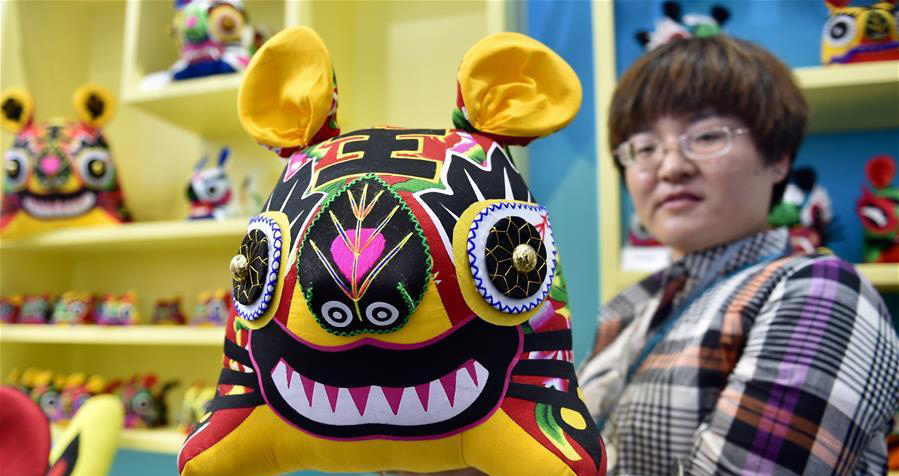Enhancing int’l influence of contemporary Chinese culture

On May 11, an exhibitor displays a cloth tiger made in Binzhou, Shandong Province, at the 13th China International Cultural Industry Fair held at Shenzhen Convention and Exhibition Center.(PHOTO: XINHUA)
On Nov. 24 and 25, the eighth annual meeting of the Academy for International Communication of Chinese Culture (AICCC) and international forum on the Generation of Contemporary Chinese Culture’s International Influence was held in Beijing. The meeting focused on increasing the influence of Chinese film, television, art and culture and disseminating Chinese culture globally.
Huang Huilin, a professor from Beijing Normal University and dean of the AICCC, said cultural confidence is a fundamental and durable force for a nation’s development. China, an ancient civilization, has greatly contributed to and influenced the development of world civilizations. However, China’s culture fails to match its global economic influence.
Huang added that economic strength will lay a solid foundation for the development of contemporary Chinese culture. However, the distinctiveness of culture requires that China make more excellent cultural achievements to influence the world. The generation of contemporary outstanding cultural achievements includes domestic and international generation. Domestic generation creates cultural achievements while international generation spreads achievements.
The key to enhancing the international influence of contemporary Chinese culture is to promote mutual understanding through peaceful international exchanges and dialogues. Wu Weishan, director of the China National Art Museum, said the exchange of art is more extensive and effective. The beauty and wisdom of artwork often transcend nationalities and become the common wealth of mankind. In this respect, art is an important link that forms the community of common destiny.
Hu Zhanfan, vice-president of the China Federation of Literary and Art Circles, said the information dissemination and public opinion guidance provided by television media embody the soft power of a nation’s cultural communication. At present, Chinese television has initially formed a new pattern of external communication characterized by multilingualism, multi-channel, all-media and 24-hour service.
